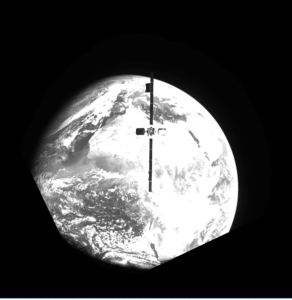
Both the companies suggest the successful docking paves the way for future on-orbit and life-extension services.
Northrop Grumman (via its wholly-owned subsidiary, SpaceLogistics LLC) completed the docking of the Mission Extension Vehicle-2 (MEV-2) to the Intelsat 10-02 (IS-10-02), a commercial communications satellite, on 12 April.
Unlike MEV-1, which docked above the GEO orbit before moving IS-901 back into service, MEV-2 docked with IS-10-02 directly in its operational GEO orbital location.
“[The] successful docking of our second Mission Extension Vehicle further demonstrates the reliability, safety and utility of in-space logistics,” said Tom Wilson, vice president, strategic space systems, Northrop Grumman and president, SpaceLogistics LLC.
“The success of this mission paves the way for our second generation of servicing satellites and robotics, offering flexibility and resiliency for both commercial and government satellite operators, which can enable entirely new classes of missions.”
Under the terms of Intelsat’s satellite life-extension servicing contract, MEV-2 will provide “five years of service” to IS-10-02 before undocking.
“Intelsat has pioneered innovations in space-based technology for more than five decades. We are proud to work side by side with Northrop Grumman on today’s groundbreaking mission, the first-ever docking of a communications satellite in GEO orbit,” said Intelsat Chief Services Officer Mike DeMarco.
“Space servicing is a valuable tool for Intelsat in extending the high-quality service experience that our customers depend upon. Northrop Grumman’s MEV technology has helped us extend the life of two otherwise healthy and high-performing satellites, while focusing our innovation capital on advancing the Intelsat next-generation network – this technology is a ‘win-win’ for us.”
Pictured above is the Mission Extension Vehicle-2 inside Northrop Grumman’s Satellite Manufacturing Facility in Dulles, Virginia.
Mission lifetimes
The goal is to prolong satellite mission lifetimes. One of the main design of these missions, of course, is that once they reach orbit they cannot be fixed.
In-Orbit Servicing could see spacecraft be able to perform repairs, add capabilities, refuel or even recycle parts of the satellites they service.
Images: Photos of Intelsat 10-02 taken from MEV-2.
See also: ESA looks to open up in-space servicing market